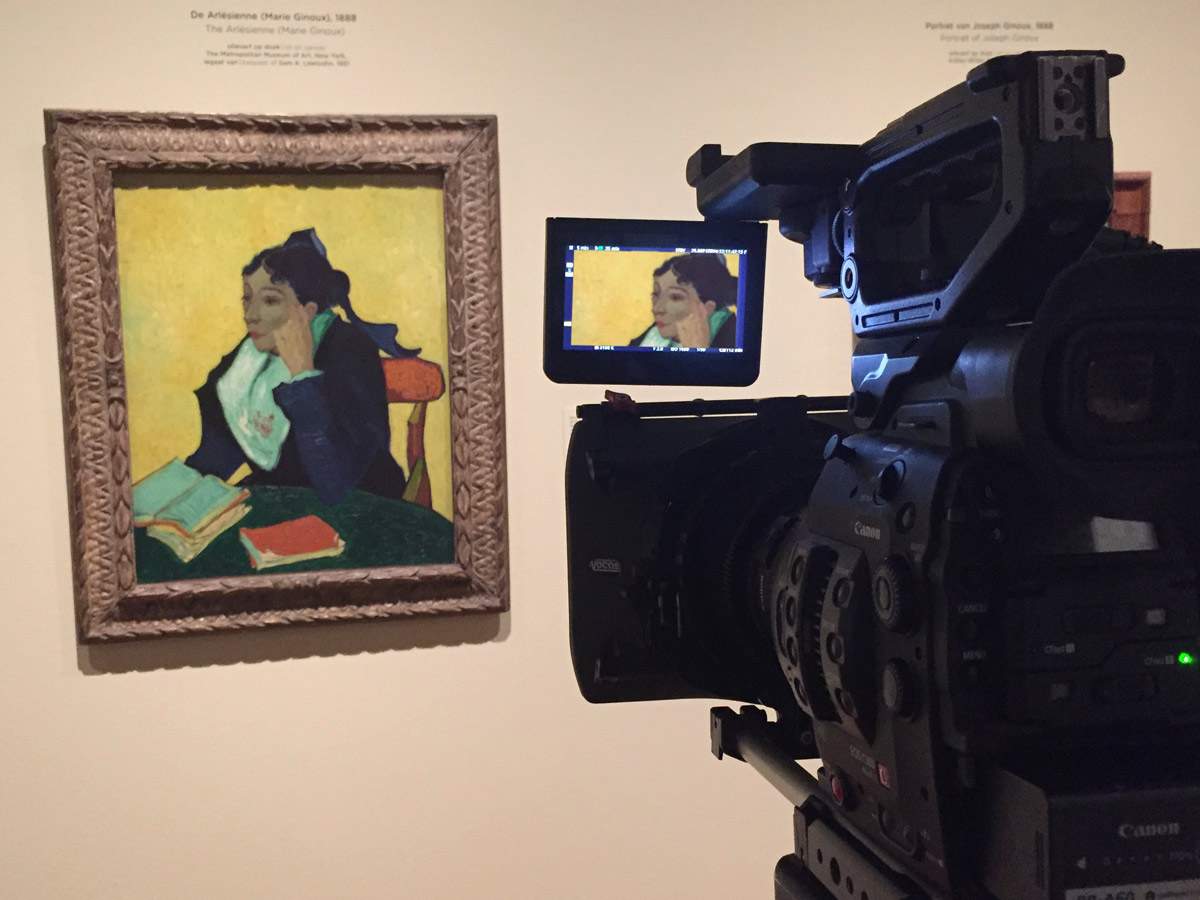Van Gogh and his passion for Japan star in a new film from The Great Art at the Movies
Coming out in Italian theaters on September 16, 17 and 18, 2019, is the film Van Gogh and Japan, entirely dedicated to the passion Vincent van Gogh (Zundert, 1853 - Auvers-sur-Oise, 1890) had for Japanese art(our in-depth look at the subject can be found at this link). The film is a new addition to Nexo Digital’s La Grande Arte al Cinema season: directed by David Bickerstaff, it offers a journey between Provence, Japan and the exhibition hosted in 2018 at the Van Gogh Museum in Amsterdam.
The reconstruction of the docufilm was made thanks to the artist’s letters and the testimonies of his contemporaries: all of which made it possible to trace a path on the theme of the deep and intense connection between Van Gogh and Japanese art, examining the role that the art of this country, never visited by the artist, had on his work. In addition to investigating the trend of japonisme, the film Van Gogh and Japan aims to guide the audience to discover the art of calligrapher Tomoko Kawao and performance artist Tatsumi Orimoto to fully understand the spirit and characteristics of the art of the Rising Sun. When the Edo period came to an end in 1868 and Japan opened up to the West, Paris in fact experienced considerable interest in everything from the Nipponese area, particularly the colorful prints imprinted with wooden matrices called ukiyo-e (literally “images of the floating world”: our in-depth discussion at this link).
Van Gogh was fascinated by all the elements of this visual culture and the way they could be adapted in the search for a new way of seeing: the artist read descriptions of Japan, for much of his career bought prints to wallpaper his room, and carefully studied Japanese works, dwelling on female figures in gardens or on shorelines, on flowers, trees and twisted branches: he appreciated lines and compositional purity of those works so much that he made them an indispensable source of inspiration for his painting. And he found his own “Japanese” dimension in southern France, in Provence, where he moved in 1888: there, van Gogh discovered a magnificent landscape, a powerful light, a population with traditional and in some ways “exotic” customs, capable of dialoguing with his idealized vision of Japan and his Japanese “dream.”
“The amazing thing about working on a film about van Gogh,” explains director Bickerstaff, “is the richness of the insights that emerge from his letters or even from just looking closely at his works. You think you know them, because they are so famous, but each ’vision’ reveals something new. The intensity of van Gogh’s feeling as he struggles with his art is laid bare with every mark he makes on the canvases. It is the search for a powerful simplicity that attracted Vincent van Gogh to the art of Japan.”
For information and to find out in which theaters the film will be shown, one can log on to www.nexodigital.it.
Image: Filming ’L’Arlésienne,’ EOS Van Gogh & Japan © EXHIBITION ON SCREEN (David-Bickerstaff)
 |
| Van Gogh and his passion for Japan star in a new film from The Great Art at the Movies |
Warning: the translation into English of the original Italian article was created using automatic tools. We undertake to review all articles, but we do not guarantee the total absence of inaccuracies in the translation due to the program. You can find the original by clicking on the ITA button. If you find any mistake,please contact us.




























